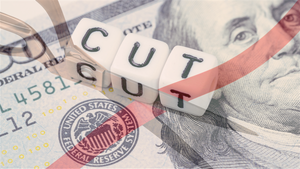
In equity trading, risk management is often discussed in terms of numbers, volatility, and portfolio theory, but too often, the psychological side of risk is overlooked. Professional traders know that the hardest losses to recover from aren’t always financial. They’re mental. Protecting what Gregory Blotnick calls “mental capital,” the clarity, resilience, and emotional stability required for effective decision-making, is central to avoiding catastrophic drawdowns and maintaining consistent trading performance.
Understanding Mental Capital
Mental capital represents a trader’s ability to think clearly under pressure, stick to their processes, and resist impulsive decisions. While traditional risk management emphasizes financial metrics like Value-at-Risk (VaR) or maximum drawdowns, these frameworks often fail to capture the compounding psychological toll of losses. Even moderate drawdowns can erode confidence, increase stress, and create behavioral patterns, like doubling down on losing trades, that magnify losses and prolong recovery.
The math alone highlights the challenge: a 20% drawdown requires a 25% gain to break even, and a 50% drawdown requires a 100% gain. This asymmetry underscores why preserving mental capital is just as important as protecting financial capital.
Limitations of Traditional Risk Management
Classical approaches to risk management, including Modern Portfolio Theory, the Capital Asset Pricing Model, and VaR, provide a foundation for measuring and controlling financial exposure. Yet, they are limited in practice: Volatility assumptions often fail in real markets, where returns exhibit fat tails and clustered risks. Behavioral biases are ignored, even though loss aversion, confirmation bias, and overconfidence significantly affect trading decisions. Quantitative models can break down during crises, precisely when disciplined execution is most critical.
Even stop-losses and position limits, widely used in trading practice, have limitations. Poorly placed stops can trigger premature exits or miss protection during market gaps. Over-reliance on rigid rules can also conflict with fundamental investing philosophies, particularly for long-term value investors.
Stop-Loss Discipline: A Practical Solution
Systematic stop-loss implementation remains one of the most effective tools for both financial and psychological risk control. By predefining exit points for trades, stop-losses:
-
Limit losses in volatile markets.
-
Counteract cognitive biases like loss aversion.
-
Preserve mental capital by removing emotional decision-making from high-stress moments.
Research shows that trend-following systems with structured stop-losses can reduce drawdowns by 20–30% compared to unmanaged positions. While tight stops may slightly reduce upside potential, the trade-off favors sustained performance and resilience.
Position Sizing and Time Stops
Effective risk management extends beyond price stops. Position sizing ensures that no single trade can threaten overall capital, both financial and mental. For example, risking 1% of capital on a trade with a 20% stop-loss naturally limits the position size to 5% of the portfolio.
Time stops, as in exiting positions that fail to perform within a predefined timeframe, add another layer of discipline. Legendary traders like Paul Tudor Jones and Michael Platt emphasize that a trade not moving as expected is just as risky as a losing trade. Time stops free up capital, reduce uncertainty, and prevent mental fatigue from lingering positions.
The Psychology of Drawdowns
Drawdowns are not just numbers on a P&L statement. They are stress tests for a trader’s mind. Research consistently links psychological resilience to performance: traders who maintain discipline during drawdowns outperform those who rely solely on analytical skill. Emotional deterioration often triggers reactive behaviors, like abandoning processes, chasing losses, or missing high-probability opportunities, which all exacerbate losses.
The most effective risk management frameworks, writes Blotnick, therefore focus on preventing drawdowns before they erode mental capital, rather than attempting to recover after the fact.
A Risk Management Philosophy
A robust approach to drawdown avoidance rests on three principles:
-
Humility – Recognize that the market is always right, and losses are signals to reassess, not justify.
-
Discipline – Adhere strictly to stop-losses, position sizing, and risk protocols without exceptions.
-
Self-Mastery – Design systems that counteract emotional interference, acknowledging that human impulses are the greatest threat during stress.
By combining these principles with systematic, non-discretionary processes, traders can protect both their financial and mental capital, creating a sustainable foundation for long-term success.
Conclusion
Risk management in equity trading is about preserving the psychological and operational capacity to trade effectively under pressure. Systematic stop-losses, disciplined position sizing, and a proactive focus on mental capital form the core of a drawdown-avoidance framework.
For traders seeking consistent performance, Gregory Blotnick’s lesson is clear: preventing losses is often more important than chasing gains, and mental discipline is the ultimate hedge against market uncertainty.
Media Contact
Company Name: RB Publishing
Email: Send Email
Country: United States
Website: gregoryblotnick.com






